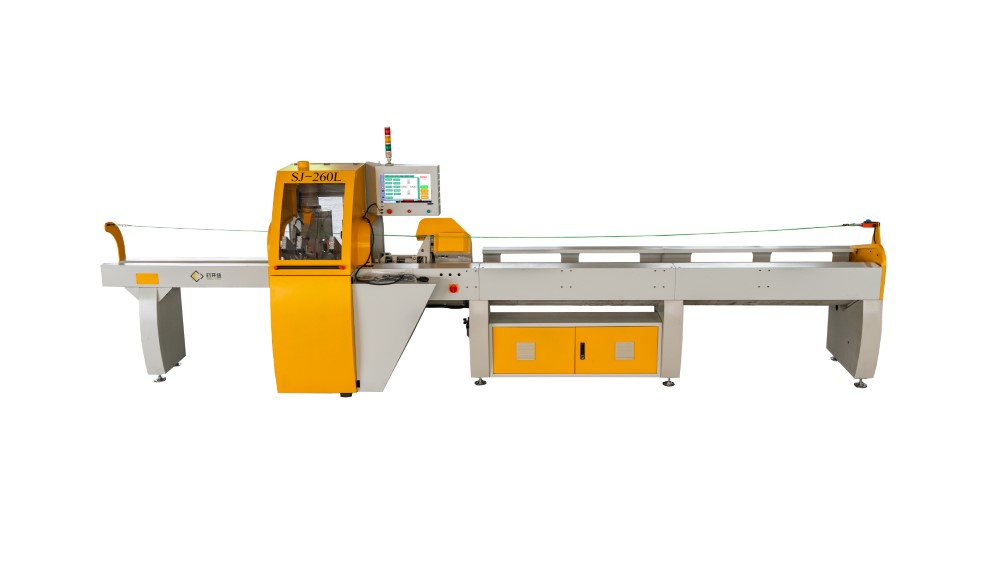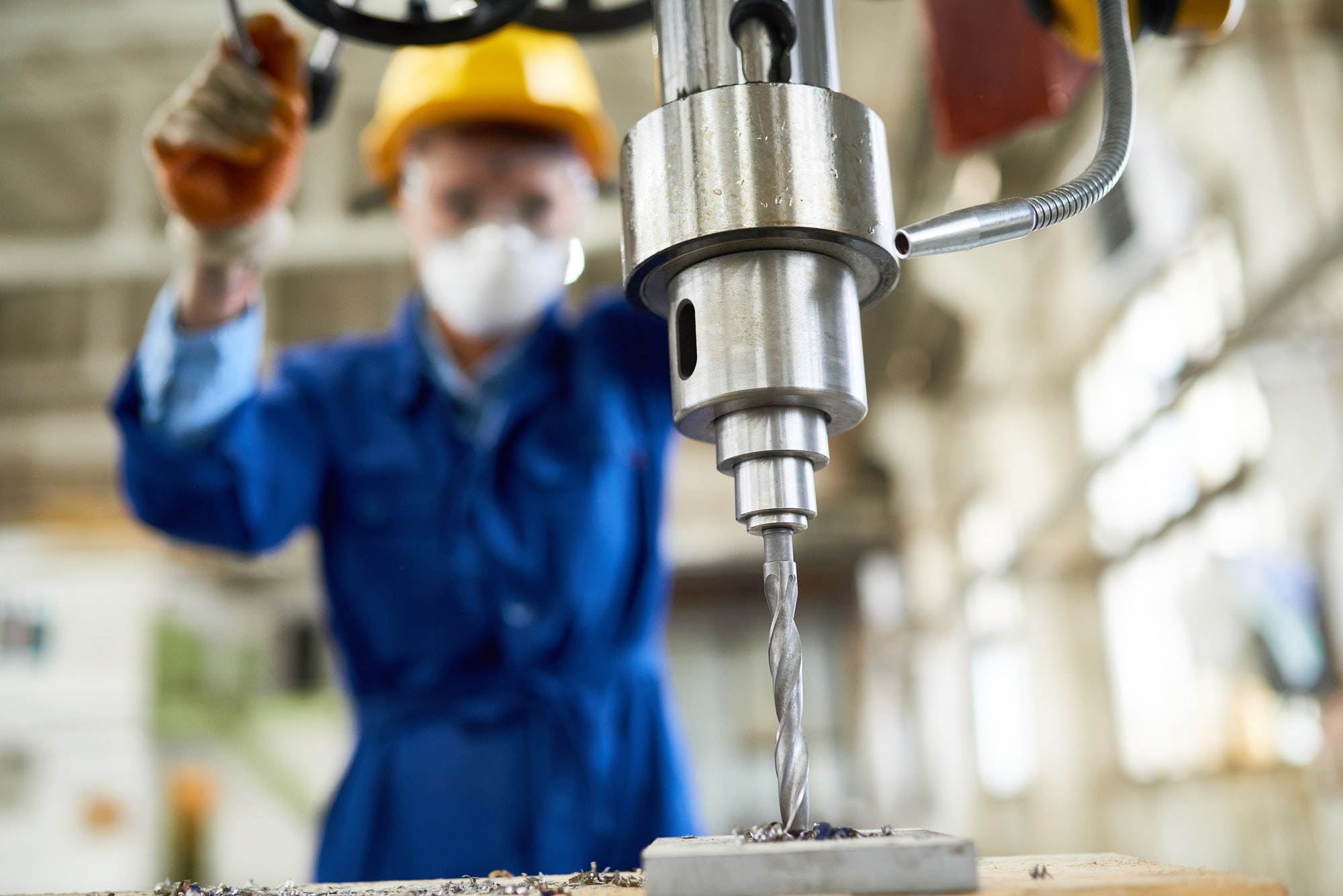wood cutting machine SJ-260L has a mature motion controller modular motion control system, which uses the software interface of the familiar Windows system for operation and control. The interface is simple and clear, easy to operate, and can scan and process codes.
The wood cutting machine SJ-260L uses a servo control system with precise variable control, which can control the feeding speed and sawing speed at any speed within the specification range.
It not only guarantees feeding speed and accuracy, but also changes the sawing speed according to the wood material, and ensures that the wood does not burst edge when the sawing speed is increased.
wood cutting machine SJ-260L Basic Features:
After the operator imports the production BOM into the CrossCut Saw CNC SJ-260L, the system will compare the data transmitted in each measurement area with the input data. The system automatically controls the lifting of the saw blade for optimal sawing to ensure that the waste is minimized.
wood cutting machine SJ-260L has a mature motion controller modular motion control system, which uses the software interface of the familiar Windows system for operation and control. The interface is simple and clear, easy to operate, and can scan and process codes.
Crosscut Saw CNC SJ-260L market prospects:
The Crosscut Saw CNC SJ-260L has significantly improved the ease of operation by applying the function of the controller’s modular system, and has been recognized by our customers.
In the integrated cutting saw, your workers will be completely liberated and your profits will increase significantly; because at this time your workers only need to do one thing to line one by one, and all other work is done by computer, workers do not need to be distracted by saw specifications and accuracy, because all of these are done by computer, so the output rate is greatly improved; the dynamic strength and pressure of workers are reduced, and it is easy to manage.
The integrated wood preferred saw is controlled by a control system that handles complex movements. It can form the best sawing case for the production plan and cross-sectional processing of the plate. It has the functions of analysis, optimization, statistics, etc., which can greatly improve the wood output rate and production efficiency while reducing labor, and eliminating safety hazards in the factory production process.

In the production of solid wood furniture, the output rate is directly related to the cost of furniture manufacturing. As the first process in the furniture processing process, the quality of the batching process directly affects the output rate and subsequent processing quality.
So how can you improve efficiency in the ingredients process? Today, we will analyze the two aspects of “ingredient method” and “batching equipment”.
Traditional batching methods for the production of solid wood furniture include:
Horizontal method, aspect method, pre-planing method, scribing method, and splicing method.
According to the general mode of operation, the production department issues production tasks to the batching team, and the batching team arranges the production tasks for each worker according to the tasks. This traditional processing process is influenced by workers’ experience and technology. Its randomness is quite large, and production is difficult to control.
There are two main types of modern ingredients:
Only a few people participated in the production line of Preferred Ingredients Technology. The computer in the preferred saw can assist the operator to complete analysis, optimize statistics, etc., and independently input, process and output data, and greatly improve production efficiency and processing quality.

In addition to the batching method, the importance of batching equipment is self-evident; the two core devices in the modern batching process are “preferred cross-sectional saw” and “preferred multi-saw circular saw machine”, which correspond to the “cross-sectional circular saw machine” and “multi-saw blade circular saw machine” in traditional equipment respectively.
The multi-blade circular saw machine is mainly used to longitudinally disassemble materials. Although the blade spacing can be adjusted, it is time-consuming and laborious to adjust and affect accuracy. It is not easy to count, manage and subsequent processing, which results in an average of 8% of wood being wasted when sawing with traditional fixed multi-blade saws.
The cross-cutting circular saw machine is mainly used to intercept materials. The whole processing process is manually controlled, and the output rate is unstable and low, and the production is difficult to control.
Preferably, a multi-blade circular saw machine can avoid the defects of wood itself in the most economical way, so that raw materials can be used economically and reasonably, and the output rate is greatly improved.
The difference between the preferred cutting saw compared with the cross-cutting circular saw is that the best optimization scheme is obtained by comparison, the sawing accuracy, processing quality and processing speed are all superior to that of the cross-sectional circular saw machine, and the efficiency is improved and the output rate is greatly improved.
The Crosscut Saw CNC SJ-260L is the preferred cutting saw with variable cutting speed and stroke, and precise fixed length. Combining functions such as selection, fixed-length cutting, and material calculation into one device, it can be applied to the production and processing of various linear wood and furniture.
The production capacity can reach 3-6 times that of a manual cutting saw, and the waste after cutting is automatically discarded, and the preferred function achieves the highest material output rate, and greatly improves production efficiency.
The Crosscut Saw CNC SJ-260L automatically measures material length, optimizes precision according to BOM data, and is preferred to remove scarring and wormwood! The accuracy can be guaranteed within 0.1mm, (multi-segment, segmented, two-head precision! (Cut the square, cut the strip, cut the board, and cut multiple pieces at the same time!) One top 4 push table saw to prevent work injuries and general work!
In the context of industries that promote energy saving and environmental protection and maximize output value, there are still many solid wood furniture companies with weak cost awareness. They place their profits on product innovation, and neglect cost control, leading to waste of manpower and material resources.
To solve the above problems, it is necessary to implement the batching process of solid wood furniture and optimize it to derive modern batching processes.
The modern batching process is based on computer information, and the stability of the process and equipment is used to cope with the changing requirements of complex raw materials and furniture parts.
Using modern batching technology, enterprises can select the color, texture and defects of wood, which greatly improves the utilization rate of raw materials.
Color optimization refers to determining the variation range of each color feature by extracting the color characteristics of a series of reference samples, and judging whether the color distribution of the test sample is within the reference color range to achieve the color selection of the sample.
When selecting colors, it is generally necessary to meet the requirements of completeness, consistency and uniqueness, and correspond to all colors that the human eye can feel.
Texture preference refers to determining whether the sawn timber texture belongs to radial cut or chord cut by extracting the texture characteristics of the sawn timber sample image, and finding sawn wood samples with similar texture through texture classification, so as to achieve texture unification.
By judging the surface texture of wood, texture classification and selection can be realized, visual sensory effects of wood products are improved, and the economic value of products is enhanced.
Defect selection refers to the collaborative sorting of surface texture defects of sawn timber using image segmentation and compression sensing. When wood is defective, sawn timber can be defined as sawn or dead according to the surface defect category; if there are no defects, sawn timber can be defined as chord cut or radial cut according to the surface texture category.
By selecting the above three aspects, the maximum utilization of raw materials can be achieved. Among modern wood processing processes, the most widely used and widely used is preferred sawing equipment.
Preferably, the saw is controlled by a computer system, and all components coordinate and cooperate to automate processing to form assembly lines. The working principle is that the operator uses a highlighter to determine the defect position and grade conversion point. Through a measuring table equipped with a decoder and a fluorescent reading camera, the device measures the length of the plate and the position of the marking point, transmits the information to the computer, and transmits the information to the sawing unit according to the preferred command.
Preferably, the production of ingredients for saws is controllable, orderly and flexible. Modern ingredients can be processed using multi-specification and multi-grade raw materials, and can provide several personalized ingredient solutions.
The Crosscut Saw CNC SJ-260L adopts automatic control and has high machining accuracy. Timely adjustments can be made to production orders, production volumes and production requirements, which greatly improves production efficiency.
Modern batching equipment has a high degree of automation and advanced optimization systems. The main technical work is basically done by a computer system that prefers saws, and ingredients workers do not need to undergo long-term training.
Crosscut Saw CNC SJ-260L can perform statistics and analysis of data. It is connected to the enterprise’s computer server to obtain processing instructions and feedback data and tables.
The biggest difference in the Crosscut Saw CNC SJ-260L is in the process flow compared to traditional batching processes.
With the support of new technologies, enterprises understand and make good use of the preferred sawing process can greatly reduce production costs, improve industrial efficiency, and thus increase the added value of the industry.
Drive the innovation of smart tenon joints and build a model of the smart industry together.
Suzhou shikainiu CNC Equipment Co., Ltd. is a high-tech enterprise in Jiangsu Province. The company inherits the traditional Chinese furniture manufacturing technology and reproduces various tenon and mortise processes through modern equipment. The main products are optimizing sawing, tenon and mortise production, door and window production.

Add:18-2 Tiandoli Road, Yangcheng Lake Town, Xiangcheng District, Suzhou, Jiangsu

request a quote